This review will focus on the flagship 3080 Ti from MSI, the SUPRIM X series. The MSI RTX 3080 TI SUPRIM X boasts an 1845 MHz boost clock and 1830 MHz out of the box. That's a rather noteworthy bump seen from the reference 1665 MHz boost.
The SUPRIM X model also features a TDP of 400W, which is 50W over reference specs. In return, you'll gain more performance, bringing the series even closer and sometimes passing 3090 performance. MSI equipped the card with a semi-passive design; the three fans start to spin and cool once the GPU warms up. Make no mistake; both modes offer the same performance; just a marginal difference in temperatures and acoustics can be perceived.
MSI increased the power allowance as well as the turbo clock frequency. SUPRIM X has been fitted with a new TRI FROZR cooling solution with three TORX 4.0 fans. New in the design is that it has close quarters heat pipes around the VRM and a backplate .
It takes the throne of the fastest PC gaming graphics card with nothing coming even close to it. It's surprisingly much faster than the GeForce RTX 2080 Ti which is its Turing based predecessor but just being fast isn't enough for a card of this scale or price. The GeForce RTX 3080 Ti carries more cores, more memory, higher performance efficiency, and also carries next-generation ray-tracing and tensor cores that make this a truly next-generation graphics card. At this point it has been said that as far as the price and availability of the video card is concerned the situation in the market has not changed significantly in the last few months. There is still a very large demand for products of this type from just about anyone you can think of. The AI world wants such, the gaming world wants such, and of course content creators and graphics people who appreciate the respectable processing power that such a product offers.
You can see a very clear hierarchy in the amount of resources devoted to each off-the-shelf product, with everything you see in this list still being produced and still sold… where there is at least inventory. Not much in the history of NVIDIA We saw such a quick launch attachment that included seven video cards from the same series. The interesting thing is that the desire for performance is higher than the desire to produce graphics cards with an extremely low heat envelope. Almost all new graphics cards from NVIDIA Rated 200W or more of heat casing. Near the three-pin power connector, MSI has added a BIOS selector switch that lets you choose between Gaming and Silent modes.
Both have the same clock speed, but Gaming Mode allows the fans to ramp a little higher to keep the card cool. In this mode, the card peaked at 68C after repeat runs of Unigine Heaven and hovered closer to 65C when playing actual games. This was also in a hot 26C office, so I would expect the card to run cooler in an air conditioned setting. In Silent Mode, this ramped to 72C but I honestly didn't find it necessary. The cooling system is performant enough that it never needed to ramp the fans up obnoxiously high and was on par, if not a bit better, than the RTX 3080 Ti Founders Edition in acoustic performance. An interesting macro image is that of the capacitor composition behind the graphic core itself.
Here is a long story of learning, learning and improving a product. When the RTX 30 series was launched NVIDIA, There were users who received that their computer system crashes when changing from rest mode to game effort mode. According to many, it was the capacitor composition of the video card and associated with the graphics core itself.
It has been said that in some designs there is no good balance between capacitance and response time and current supply. There is also an "Extreme mode" that increases the boost clock speed to 1845 MHz. NVIDIA's latest RTX 30 series GPUs have excellent GPU boost technology. Sometimes even close to 2,000MHz or sometimes above; provided that it has enough cooling and power. There's really no need to manually overclock the GPU, or apply any overclocking mode. On the back of the video card there is a selection switch between two working modes.
This is a switch that must be set before turning on the computer each time. In practice, the difference between them is between two fan profiles, when that of gaming will be slightly more intense. In practice, this cooling is so quiet and efficient, that the difference is small anyway.
Developers can now add even more amazing graphics effects to Microsoft Windows-based PC games. GeForce RTX graphics cards deliver advanced DX12 features like ray tracing and variable rate shading, bringing games to life with ultra-realistic visual effects and faster frame rates. But based on my review of the RTX 3080 SUPRIM X, the SUPRIM series typically performs slightly faster compared to other reference-based graphics cards. I also don't have an RTX 3090, but since the RTX 3080 Ti is basically a strip-down RTX 3090 with less memory, I think their performance is quite similar. The SUPRIM X is somewhat a power-hungry graphics card, requiring three 8-pin PCIe power connectors.
It has a higher power target and limit compared to other RTX 3080 Ti graphics cards. But if you have a lot of components installed or connected to the system, I'd recommend going 850W or above just to be on the safe side. The MSI GeForce RTX 3080 Ti SUPRIM X also features dual BIOS, where you can choose from "Gaming mode" or "Silent mode".
Both modes have the same clock speeds but the Silent mode has a less aggressive fan profile. The TGP for the card is set to be slightly higher than the RTX 3080 at 350 Watts. That's definitely needed to feed the extra cores so NVIDIA might have to optimize the clocks a bit here. In terms of performance, the graphics card is said to be as fast as the RTX 3090 but with half the memory & LHR technology-enabled.
As for compute numbers, the RTX 3080 Ti features 34 shader TFLOPs, 67 RT-TFLOPs, & 273 Tensor TFLOPs . Anthony joined the TweakTown team in 2010 and has since reviewed 100s of graphics cards. Anthony is a long time PC enthusiast with a passion of hate for games built around consoles. FPS gaming since the pre-Quake days, where you were insulted if you used a mouse to aim, he has been addicted to gaming and hardware ever since. Working in IT retail for 10 years gave him great experience with custom-built PCs.
Elsewhere, MSI has taken care to give the memory modules their own heatsink and heat pipe to help whisk heat away. This is a nice touch as they're sometimes neglected, even on custom cards. To keep the GPU die cool, MSI has gone with a nickel-plated copper base plate and an array of seven heat pipes to channel heat to the sprawling heatsink. The heat pipes run the full length of the heatsink for more efficient heat dissipation, and they've also been machined flat to maximize the surface area that comes in contact with the copper base plate. Well-placed thermal pads provide additional heat dissipation for other components on the PCB. Like I opined in my original review, most gamers would absolutely be better served picking up an RTX 3080 as soon as they can find one at MSRP.
Yet, if you have your heart set on a 3080 Ti, there is no mistaking that this is an excellent choice that is clearly ready to be pushed further with a custom overclock. It's just a shame that pricing is so high because while this card may just be the best "gaming" card on the market right now, it's so cost-prohibitive that it's hard to recommend to anyone other than high-level enthusiasts. That said, price to performance value has always gone out the window when it comes to the upper echelons of graphics cards, so those looking for the best of the best typically are prepared to pay for it. The MSI RTX 3080 Ti Suprim X supercharges the RTX 3080 Ti with its highest clock speeds—1830 MHz vs. 1665 MHz reference.
In this review, we take the card for a spin across our test-suite to tell you if shelling RTX 3090 kind of money for a top custom RTX 3080 Ti is worth it. MSI hasn't provided any pricing information yet, but we expect the card to go for around $2100, $100 more than our estimate for the NVIDIA baseline price. Now both custom NVIDIA GeForce RTX 3080 Ti graphics cards are redrawn.
The Gigabyte Gaming OC model features a triple-slot and triple-fan Windforce 3X cooler, and MSI's SUPRIMX variant features a large TriFrozr 2S cooling system. Both cards have a non-reference PCB design and premium cooling compared to the Founders Edition model, but MSI SUPRIMX, the finest custom variant, is also offered at a higher price. GDDR6X memory is known inside one that emits a tremendous amount of heat, and its cooling on the back of the card is a recommended thing.
This video card uses a respectable aluminum surface and thermal pads to conduct heat from the card. There is a dragon logo associated with the gaming products of MSI And it's on RGB Are controlled. MSI's GeForce RTX 3080 Ti SUPRIM X series is an excellent graphics card. I think the SUPRIM series is an excellent design; offering superior cooling solution, performance, and it is simply an exquisite graphics card that screams premium. I couldn't find any fault in the design or its cooling capabilities.
The only downside I can think of is this is one big and heavy graphics card. And depending on the chassis or casing you use, you may need to double-check the clearance. No doubt that the GeForce RTX 3080 Ti is a 4K gaming-capable graphics card. Even with ultra graphics or the highest graphics settings, it was able to drive all game titles above 60fps in 3480×2160 resolution.
At 4K resolution, the RTX 3080 Ti offers around 13%, on average, performance increase from the RTX 3080. The design of the card is similar to the existing NVIDIA GeForce RTX 3080 Founders Edition graphics cards. NVIDIA didn't go with the bulky BFG design like its RTX 3090 and kept the more standard 2-slot FE Flow-Through air-cooled design. Display outputs include 1 HDMI 2.1 and three DP 1.4 connectors. The card will be available to buy on the 2nd of June at $1199 US.
Expect several custom models to be announced shortly by the NVIDIA board partners. It's not just the FPS that matters these days, it's visuals, and a smoother frame rate too and this is exactly what the GeForce RTX 30 series is made to excel at. There's a lot to talk about regarding NVIDIA's flagship Ampere gaming graphics cards so let's start off with the specifications. The Taiwanese company MSI (Micro-Star International) has earned a solid place in the world of IT, mainly producing motherboards for desktop computers.
However, it also produces high quality graphics cards, barebone computers, notebook computers, networking products, servers, and many other computer components. MSI products support the latest technologies and provide the performance necessary for all applications. Recently, the company has begun making a name for itself in the growing segment of gaming notebooks. Of course, MSI Afterburner is in the game and, with it, all the options related to monitoring the card, to its overclocking.
The Taiwanese also offers the MSI Center which comes more or less as a "replacement" for the MSI Dragon Center, which is still available. The MSI Center is formed around a modular structure, basic, is limited to monitoring in real time of the card. We can then add modules to take care of "anything and everything" from the management of the fans to the graphics optimization of the games, including the RGB effects on the multiple LEDs of the Suprim X. Simple and complete tool which nevertheless remains a little accessory.
The premium construction of the card shows itself in the brushed aluminium shroud, which confers a really solid feel. The TriFrozr 2S cooler keeps things chilly, featuring three Torx 4.0 fans. Each double-ball bearing fan has a unique design, where individual pairs of blades are linked with a ring of sorts. This is supposed to help focus airflow toward the heatsink and increase static pressure. This cooling system itself is identical to what was featured in the earlier RTX 3080 Gaming X Trio, but the new brushed metal shroud is the visual highlight that elevates the graphics card to another level.
Redditor, Faisal KhatibI found the MSI GeForce RTX 3080 Ti SUPRIMX at a local UAE retailer on NVIDIA subreddit . The graphics card is said to be available for purchase at a price of US $ 3,500 one month before its official launch. SUPRIM means more than just a new graphics card series from MSI. Decades of circuit engineering and cooling development have led to a new product design that embraces prestige in its appearance and capabilities.
The latest iteration of MSI's iconic GAMING series once again brings performance, low-noise efficiency, and aesthetics that hardcore gamers have come to recognize and trust. Now you too can enjoy all your favorite games with a powerful graphics card that stays cool and silent. When silent mode is enabled, the fans become less aggressive and the temperature may go slightly higher.
Nevertheless, the graphics card remains very silent and almost inaudible at all times. But the SUPRIM has all the bells and whistles MSI can think of to slap on their GPU. So, let's check out how NVIDIA's latest RTX 3080 Ti GPU performs, in the form of MSI RTX 3080 Ti SUPRIM X, in our review below. Like most of MSI's high-end, premium graphics cards, the company has spared no expense in the design of the SUPRIM X RTX 3080 Ti. Unlike the Founders Edition variant, the card used the standard PCB design that is, in turn, kept cool with a massive heatsink that envelops the entire card.
NVIDIA's GeForce RTX 30 series is made up of a diverse portfolio of graphics cards. NVIDIA themselves call the GeForce RTX 3080 Ti the flagship graphics card and not the GeForce RTX 3090. From the front and back, MSI's custom GeForce RTX 3080 Ti SUPRIM X graphics card is a helluva card to look at. The triple-fan cooler on the front looks mean, and will keep your Ampere GPU + GDDR6X memory nice and chill -- while on the back we have a fantastic heat sink -- carried over from the RTX 3080 + RTX 3090 SUPRIM X cards. Peripheral Component Interconnect Express is a high-speed interface standard for connecting components, such as graphics cards and SSDs, to a motherboard. Newer versions can support more bandwidth and deliver better performance.
When it comes to the heatsink itself, MSI's attention to detail really shows. The fin edges have been shaped like waves, which supposedly disrupt unwanted airflow noise for quieter operation. Disruptors also provide additional surface area and guide air to where it's needed for better cooling. Finally, the fans themselves will stop spinning when the GPU isn't working hard, further reducing noise when you're not actually gaming.
The RTX 3080 Ti is based on the same 8 nm GA102 silicon as the RTX 3080, but features a lot more CUDA cores. More importantly, it maxes out the 384-bit wide GDDR6X memory bus of the GA102. NVIDIA is giving the card 12 GB of memory, not 24 GB like on the RTX 3090, which it considers a halo product that even targets certain professional use cases.

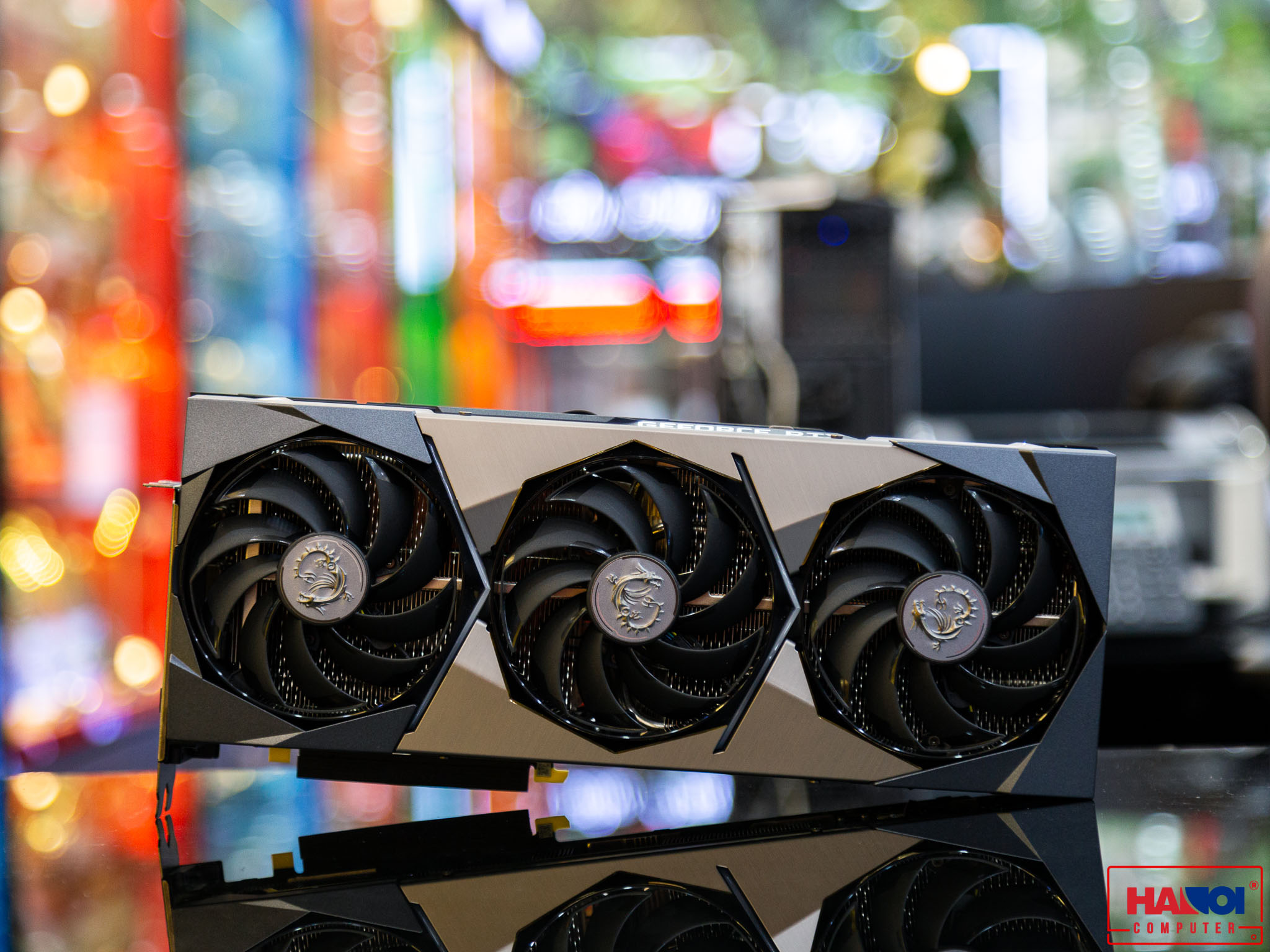








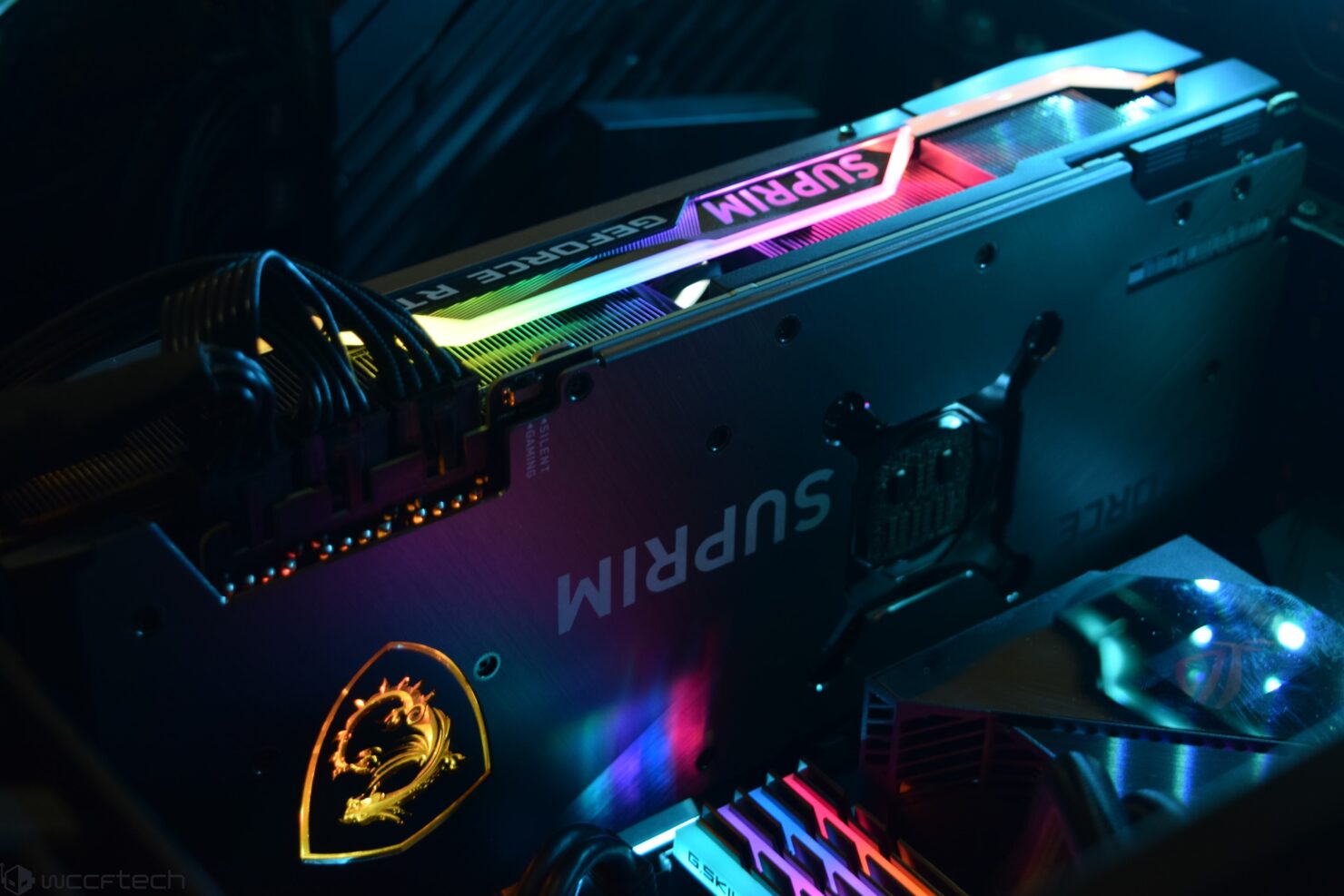

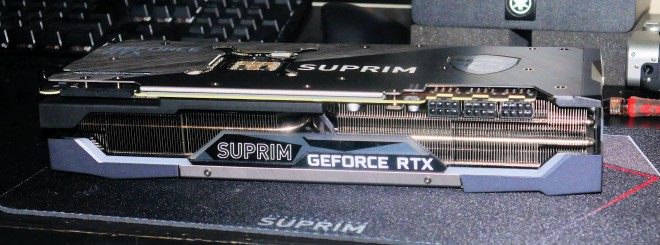




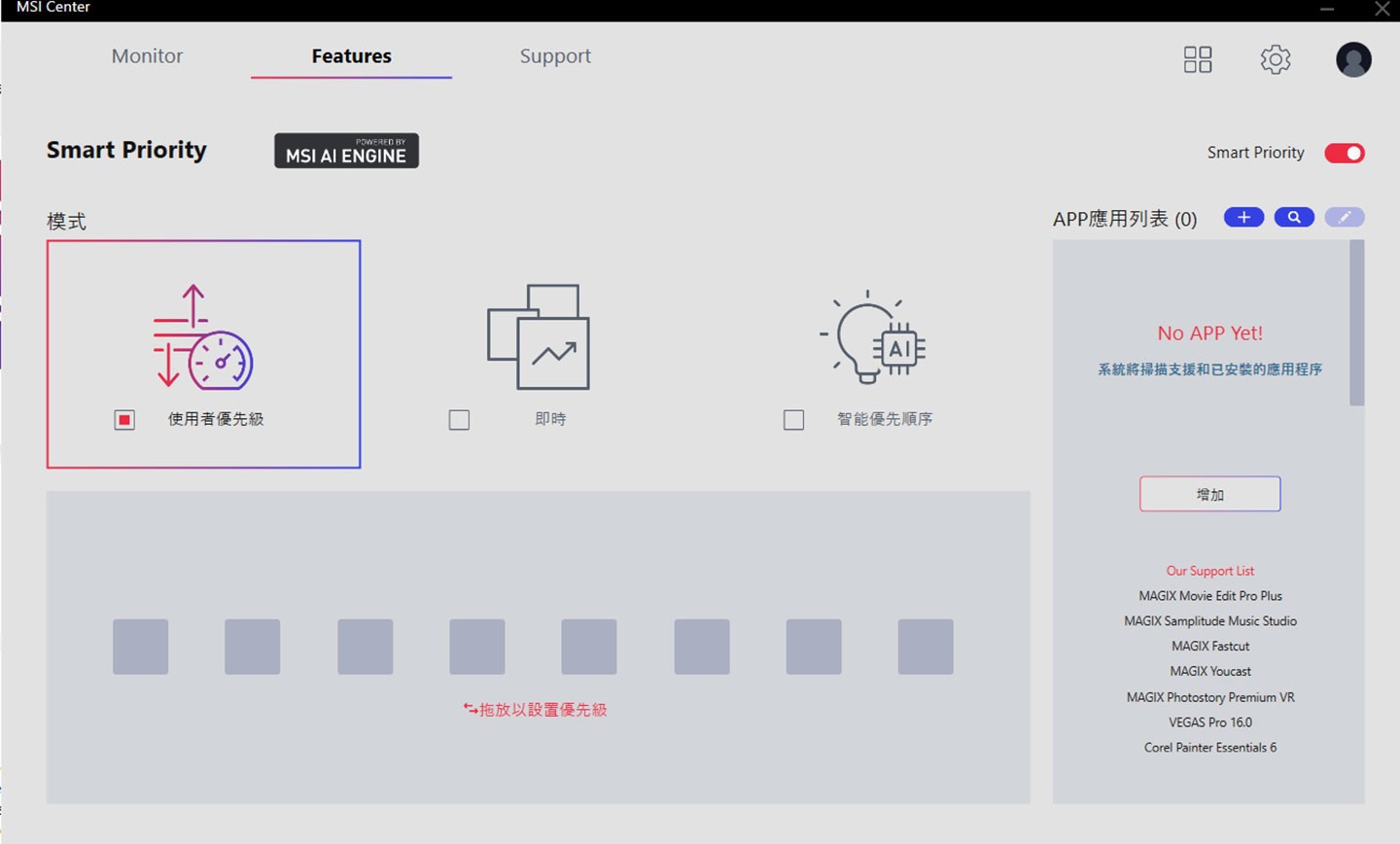



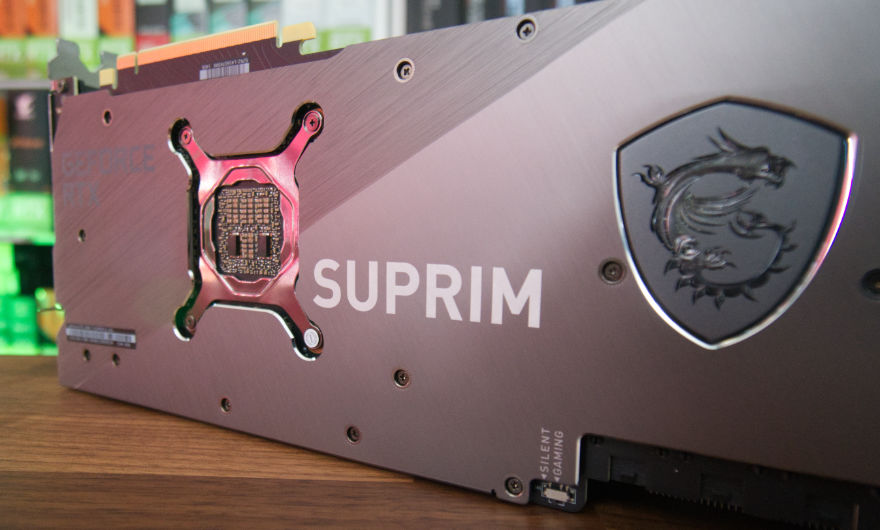
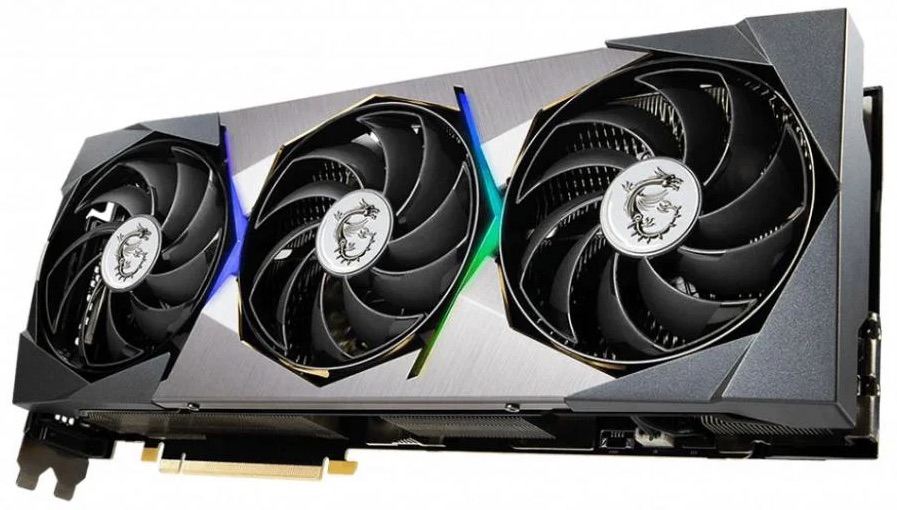






No comments:
Post a Comment
Note: Only a member of this blog may post a comment.